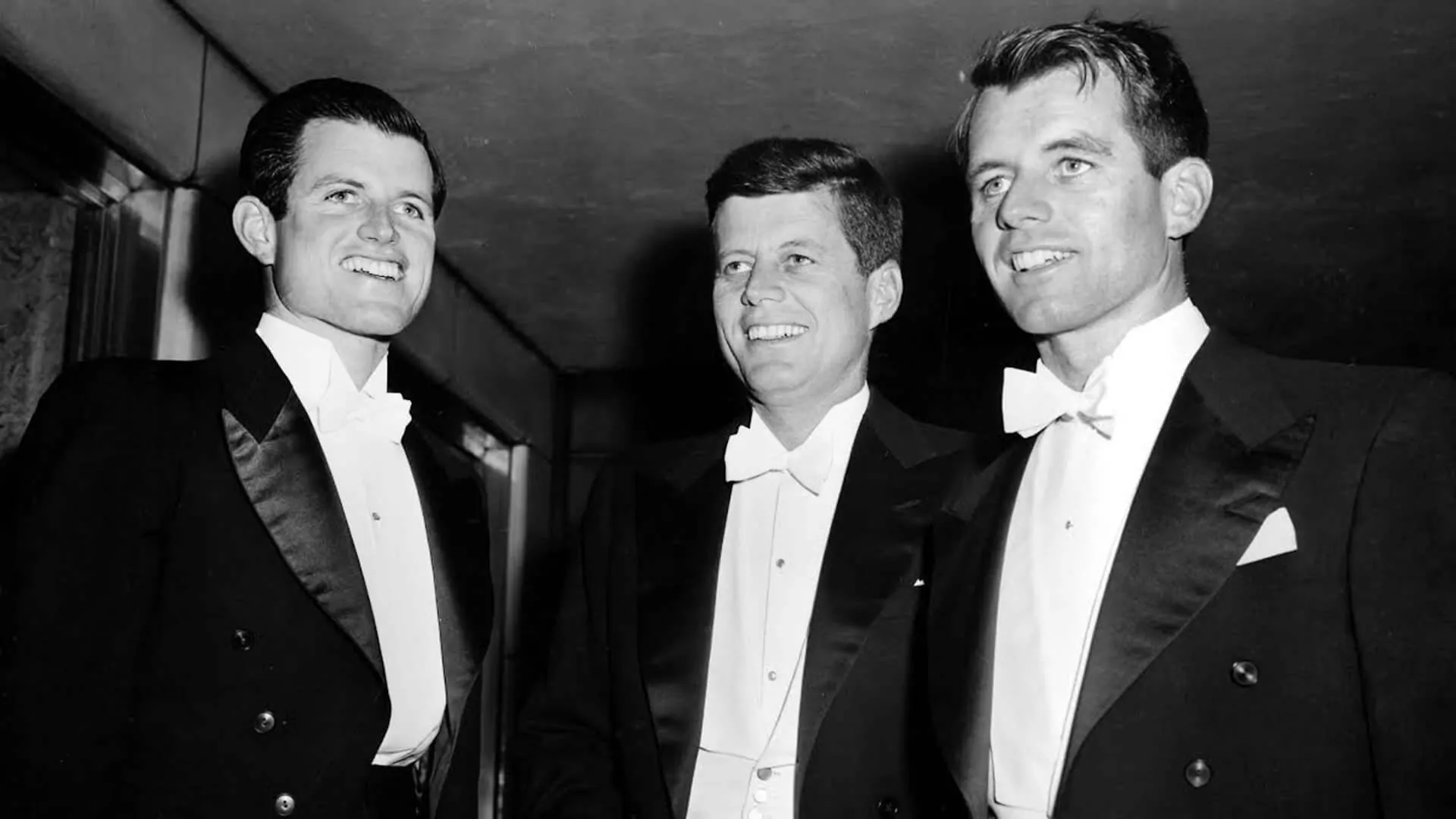Not only has Black Tie changed through the eras, black ties have also evolved. In this section you will learn about how the bow tie has developed and the role it has played in the Black Tie ensemble, including efforts to supplant the black tie from its position of supremacy in this dress code.
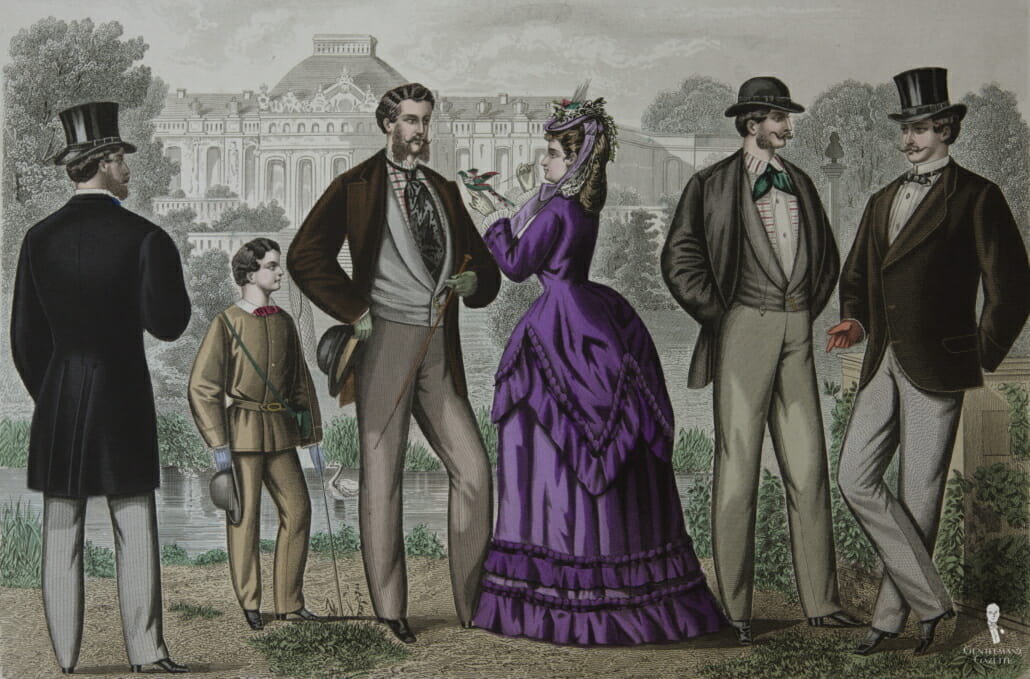
The Development of the Bow Tie
Regency Origins
What may appear to be bow ties in illustrations of Regency-era evening wear were actually large neckcloths elaborately wrapped around a tall shirt collar and finished in a small bow. By the 1860s, the fashion for high collars had subsided and with it the neckcloths, leaving behind narrow flat bows which were the original bow ties.
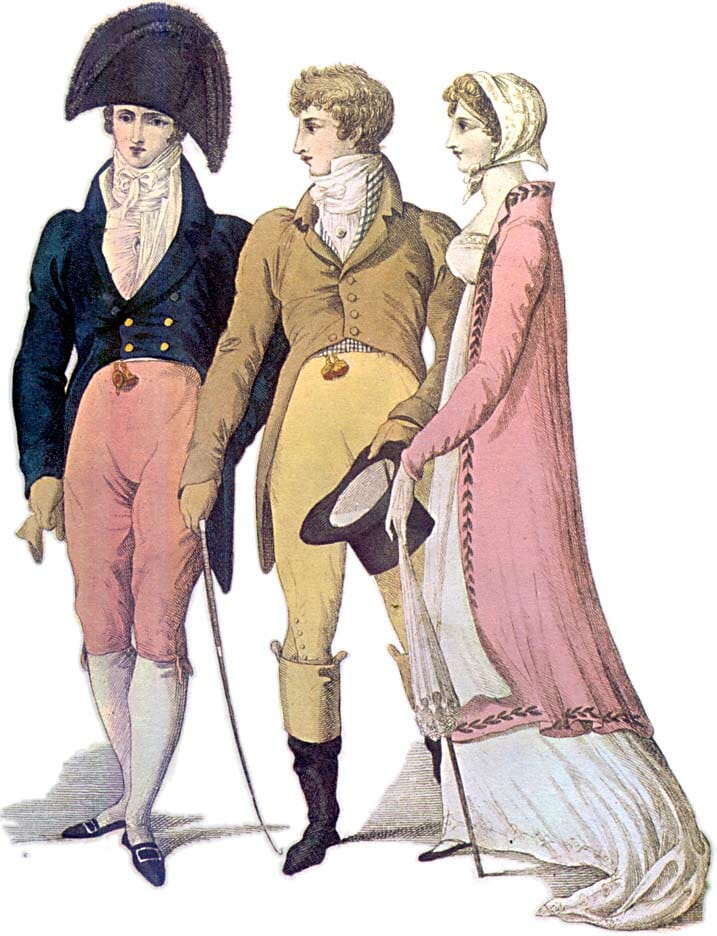
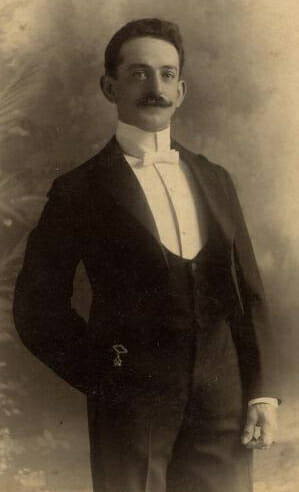
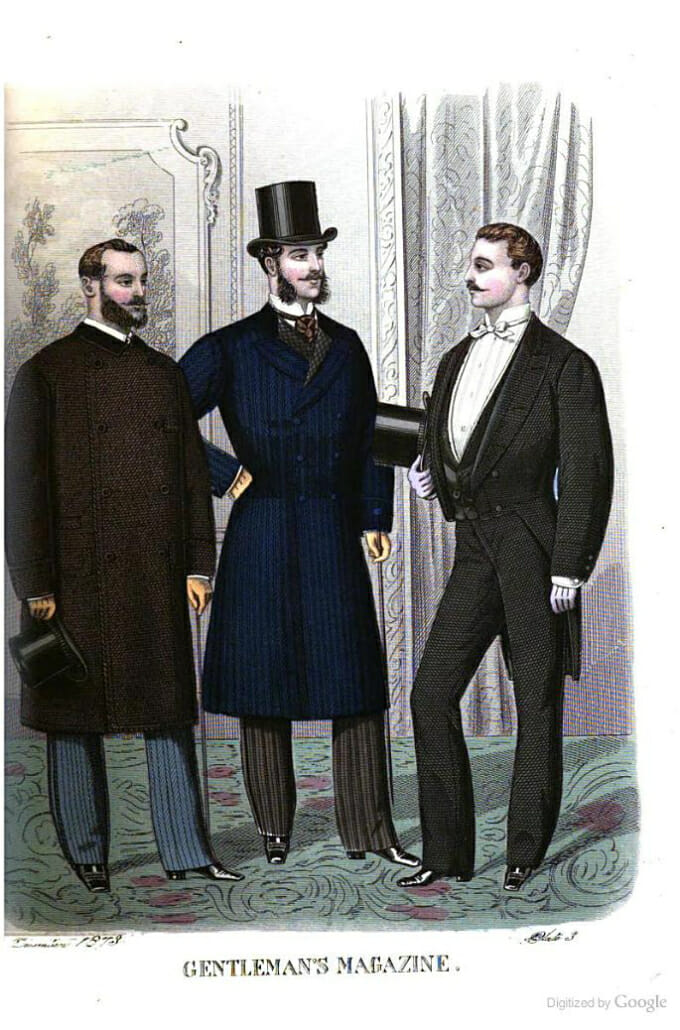
Victorian & Edwardian Refinements of the Bow Tie
The Victorian Era
In the early and mid-Victorian era, either black or white neckwear was allowable with evening dress. By the time of the dinner jacket’s arrival in the 1890s, only white was considered acceptable with tailcoats. Said the American etiquette manual Correct Dress in 1887: “The proper tie for a Full Dress Suit is a straight band of white lawn ⅝ to ¾ inches wide, tied by the wearer in a square bow with short ends. Made-up ties are not to be used. Satin and silk ties are not now considered a good form with full dress.”
The “lawn” referred to is a lightweight, semi-transparent woven fabric. Other acceptable fabrics were cambric (a weave similar to lawn and also known as batiste) and piqué. “Linen” was also often listed in period guides and presumably referred to linen in its standard weave as lawn and cambric were often made of linen as well.
For the dinner jacket, any of these formal white ties were acceptable or a gentleman could opt for a black bow tie of “silk or satin”, the latter being an artificial and glossier version of the former.
The ends of the bow tie band were at first straight then pointed ends became a fashionable alternative by the turn of the century. At this time, they were tied loosely so that the knot (sometimes known as a barrel knot) was often as wide as the bows.
Self-tie bow ties of this of this period were usually fixed size while pre-tied were adjustable.
The Edwardian Era
During the Edwardian era, full-dress bows made of piqué began to match shirts made of the same material. White bows ceased to be correct with the informal dinner jacket and from then on only black was acceptable.
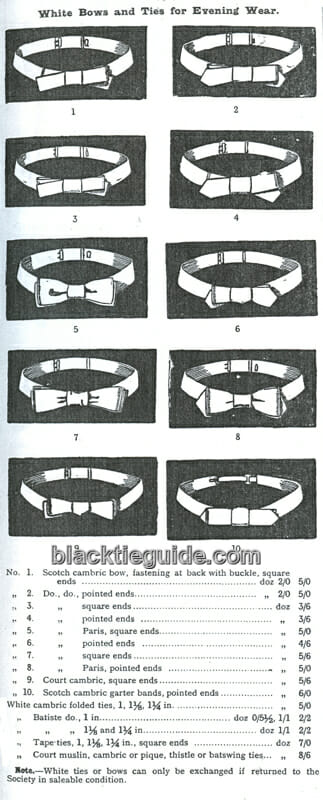
Around this time, a new style of bow tie appeared on the scene featuring ends in the shape of a thistle. When the center knot was drawn tight on this model the resulting bow took on somewhat of a butterfly shape, giving rise to the tie’s interchangeable names thistle and butterfly. Concurrently, the older straight band style became known as bat or batwing. These would remain the basic shapes throughout the remainder of the century although their individual popularity and proportions would vary dramatically with each swing of fashion’s pendulum.
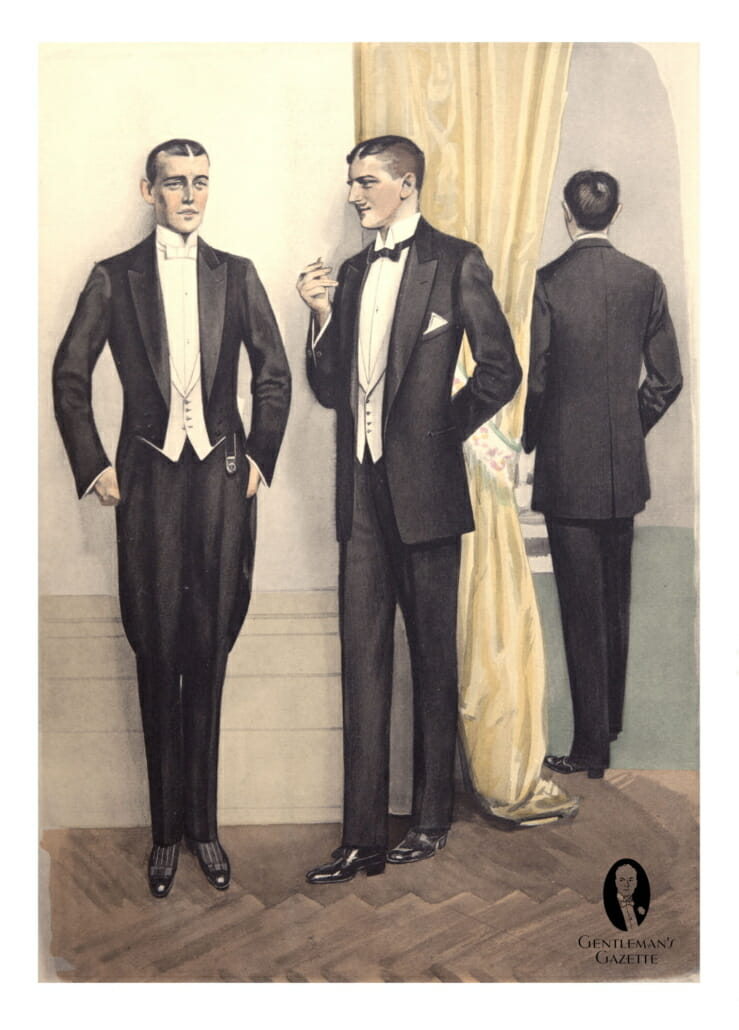
The Bow Tie in the Golden Age of Men’s Fashion
The 1920s
During the 1920s, the butterfly shape became more common and, thanks to larger wings and unlined material that allowed for a tighter knot, more pronounced. Because the ends had been wide enough cover the ends of the wing collars with which it was worn different custom sizes would be required to correspond with different custom collars. Conversely, the straight- and pointed-end versions of the batwing (the former sometimes known as a club) were intended to be worn with any size collar.
In England one-ended (aka single-ended) versions of the butterfly gained in popularity. Although described as “tricky” they had the advantage of allowing an even smaller knot. By the next decade, the novelty was also catching on in America.
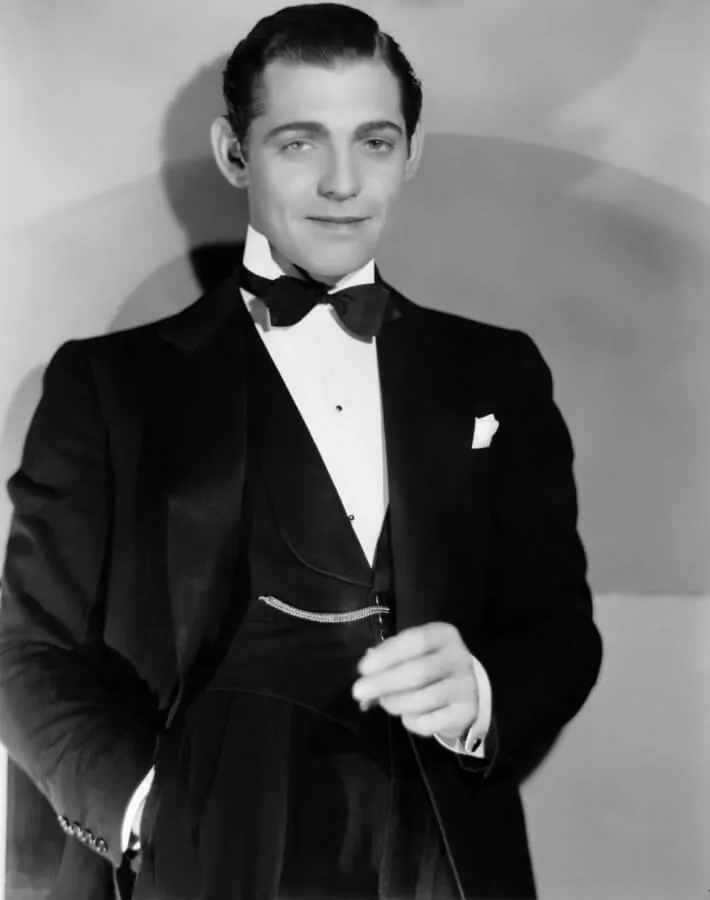
The 1930s
In the 1930s the “semi-butterfly” – a more moderate form of the thistle – was the most favored style. Menswear magazines and etiquette manuals repeatedly reminded men that the tie should be worn outside the collar’s wings and that they should not extend past the end of the wings.
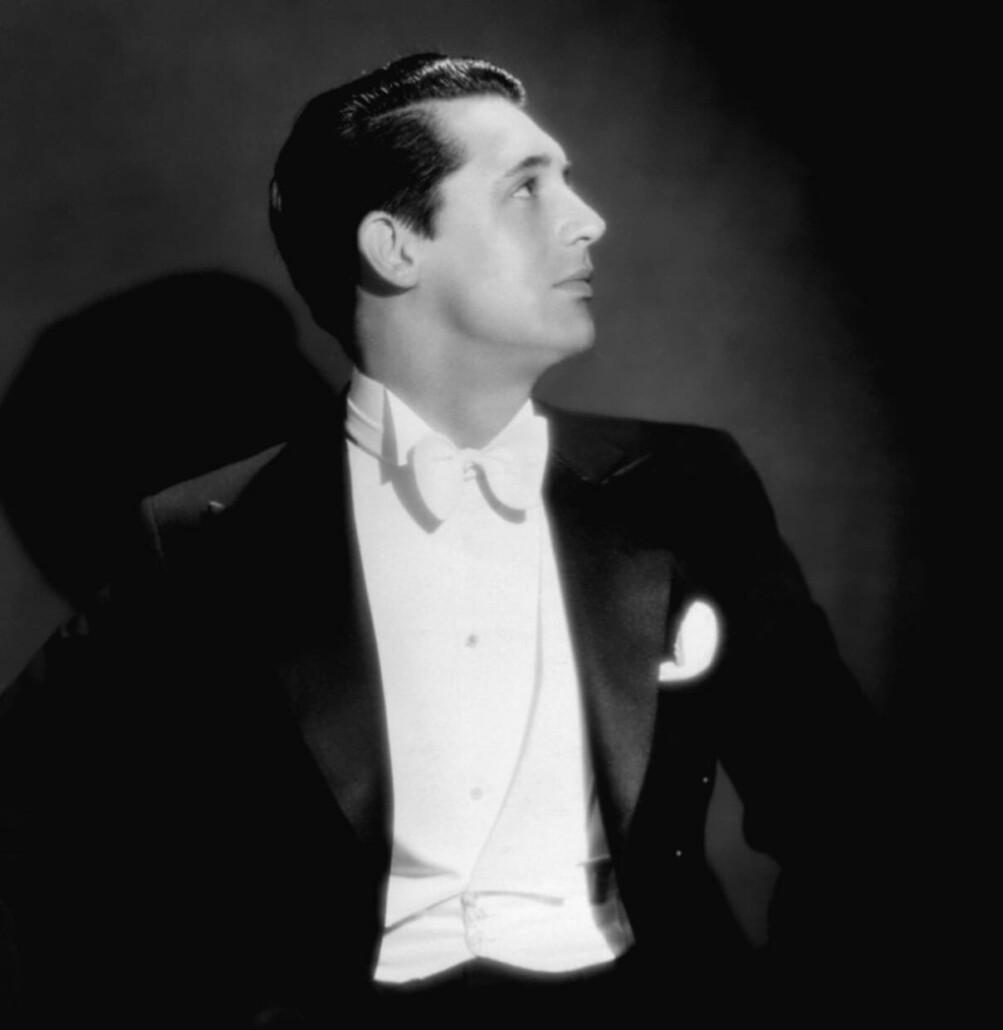
The Bow Tie from the Mid-Century to the Present
The Mid- and Late 20th Century
For the full-dress bow tie, cambric had fallen out of vogue and the tie was therefore either linen or piqué cotton to match the shirt’s fabric. By the 1940s, piqué was standard and the shirt and waistcoat often matched.
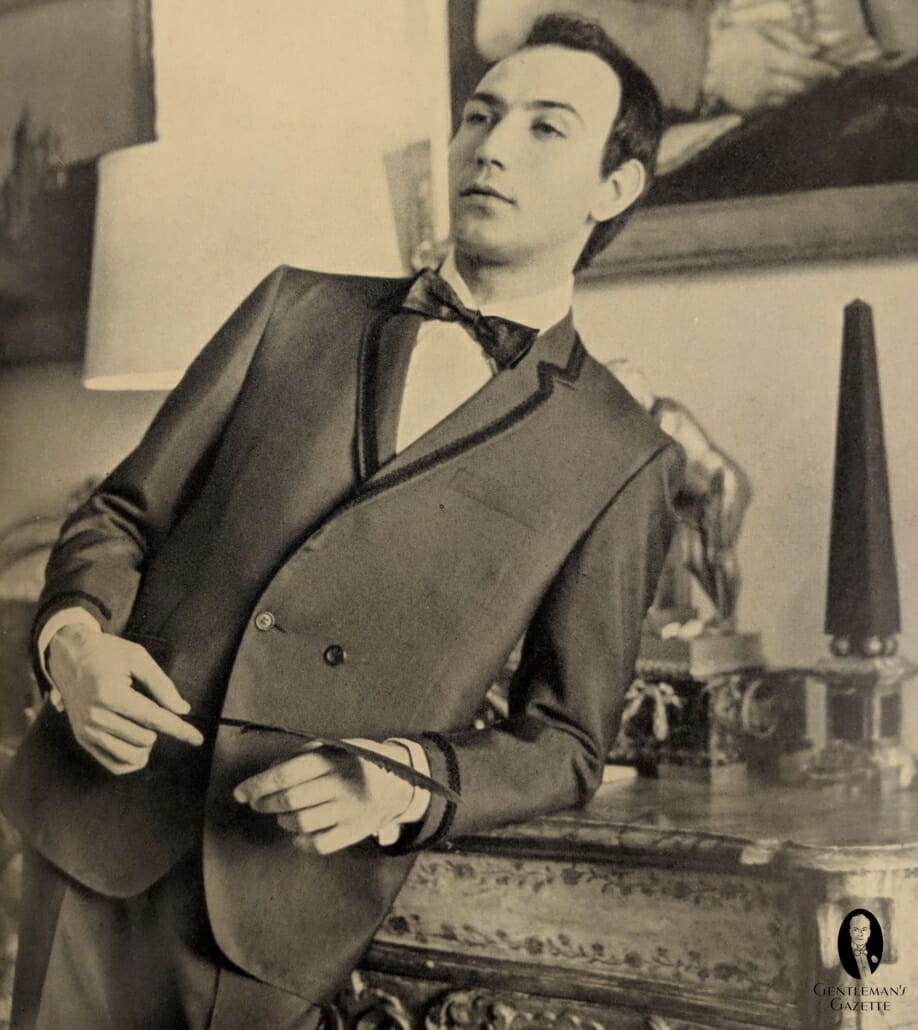
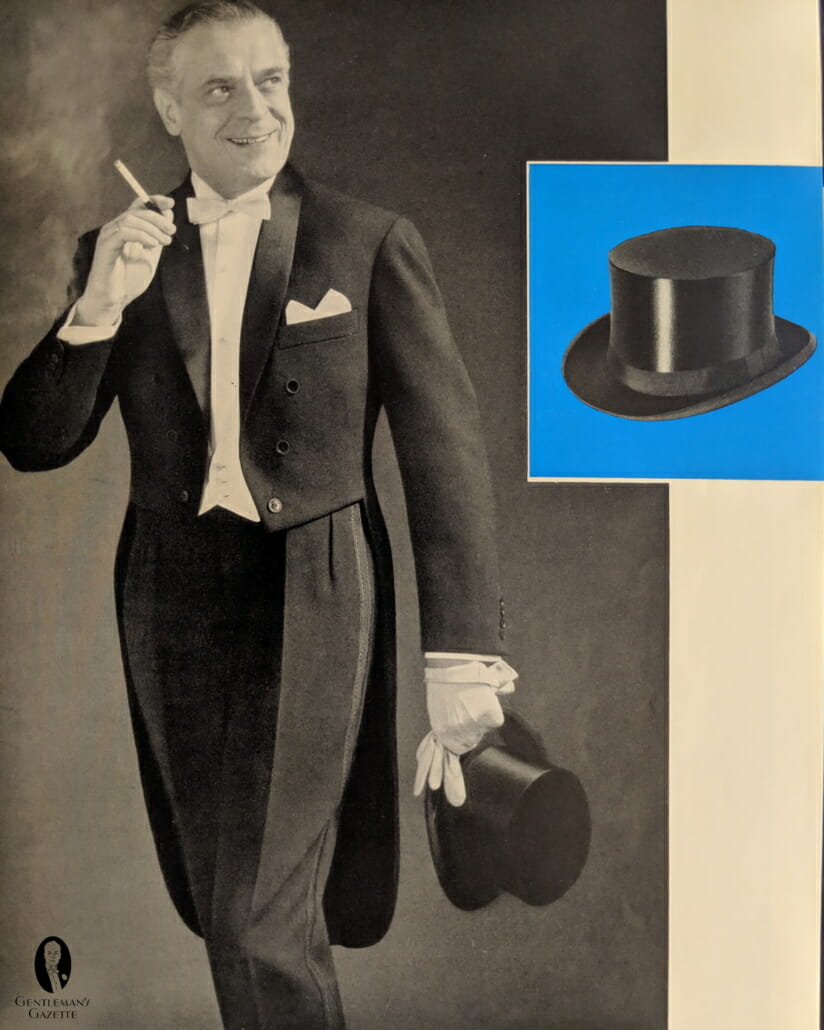
With the tuxedo, the extremely narrow ribbon bow tie was a fashion-forward alternative in the 1930s and again in the Jet Age of the 1950s when the streamlined batwing had become the norm with a modern turndown collar. Then the fashion pendulum swung again with the arrival of the Peacock Revolution’s “neo-Edwardian” vogue in the late 1960s which revived the butterfly shape and expanded it to massive portions (oblivious to the fact that the true Edwardian bow tie had been a tiny affair).
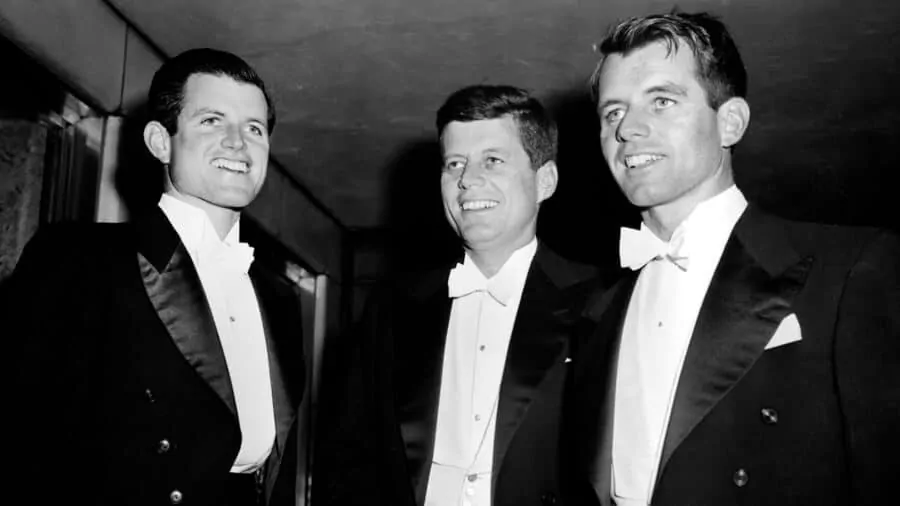
It remained in its comically oversized state through the seventies to harmonize with the disco era’s exaggerated lapels, trouser bottoms, and ruffled shirt fronts. Then back swung the pendulum and in came the New Wave batwings so narrow that their bow was not much wider than their band. These iconic eighties bow ties were often colored to match the cummerbund and were almost always paired with the period’s ubiquitous wing collar shirt.
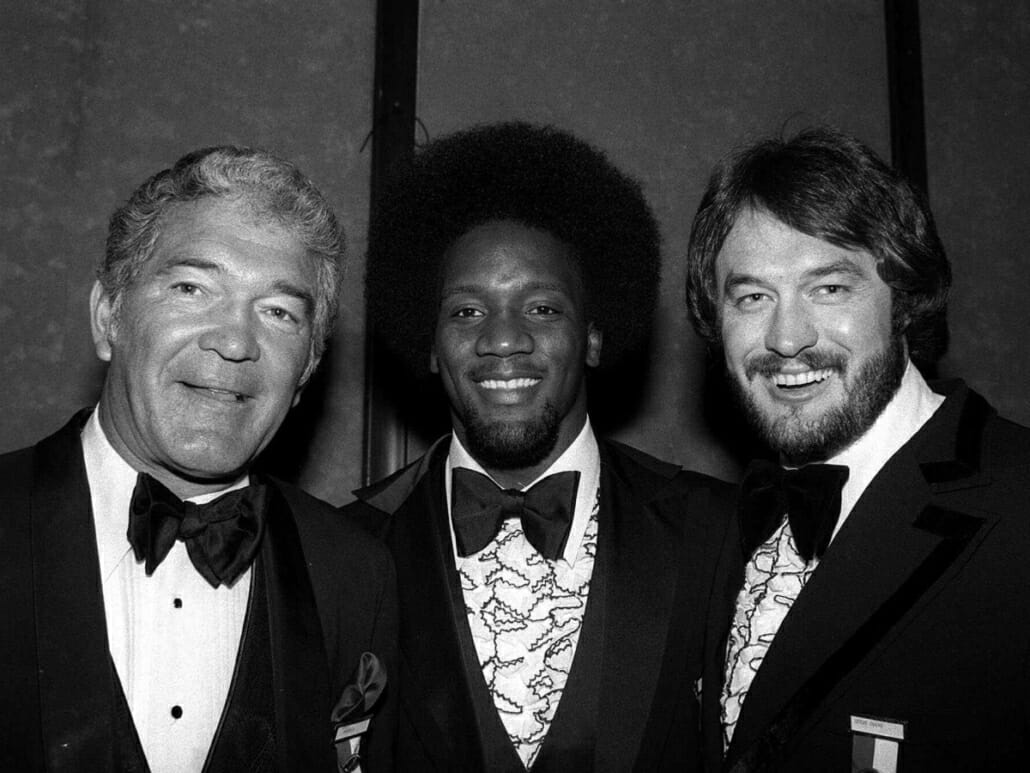
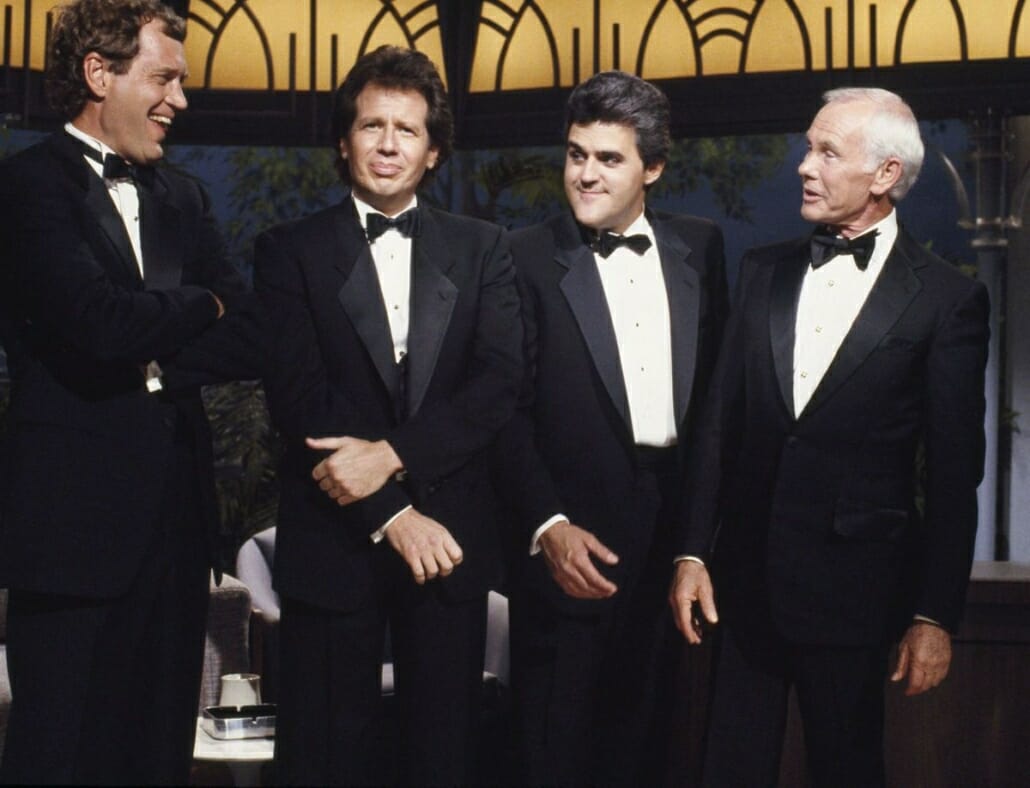
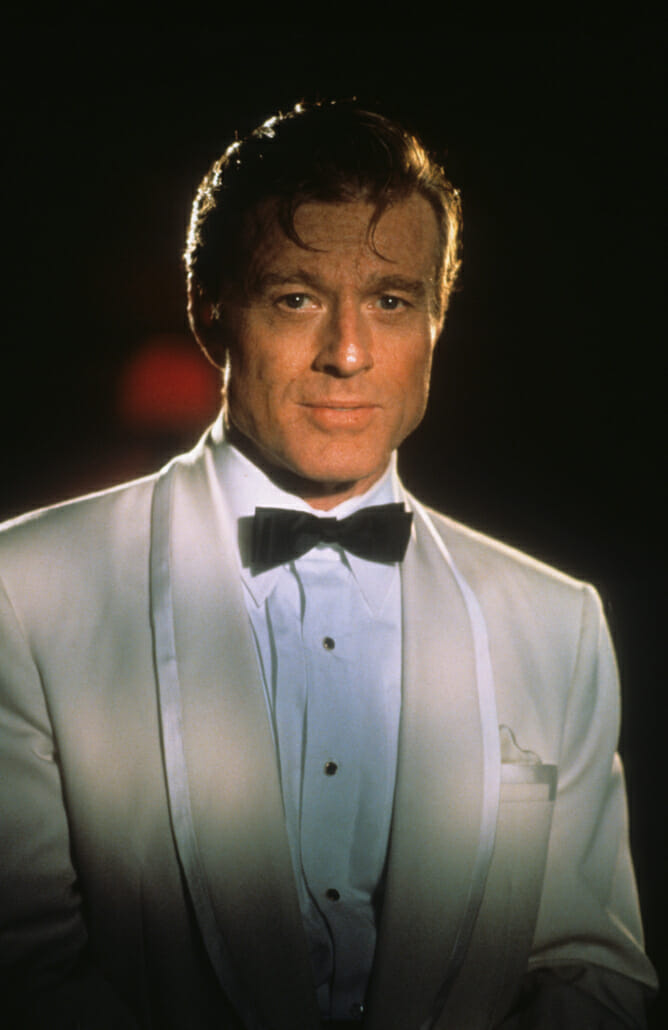
The extreme shifts in fashion finally settled in the 1990s and bow ties returned to moderate proportion, semi-butterfly shape, and black color. However, by this point, they were being increasingly challenged as de facto black-tie neckwear by the tie-less Nehru collar shirt at first then by the black silk long tie.
The Continental Tie
In America in the late 1950s, the traditional boxy and bulky cuts of English suits gave way to the slimmer and more youthful Italian cut which became known as the Continental Look. To complement this new streamlined style of tuxedo, formalwear manufacturers introduced the continental tie, a wide strip of black silk or satin that crossed over at the throat where it was held together by a snap or decorative pin.
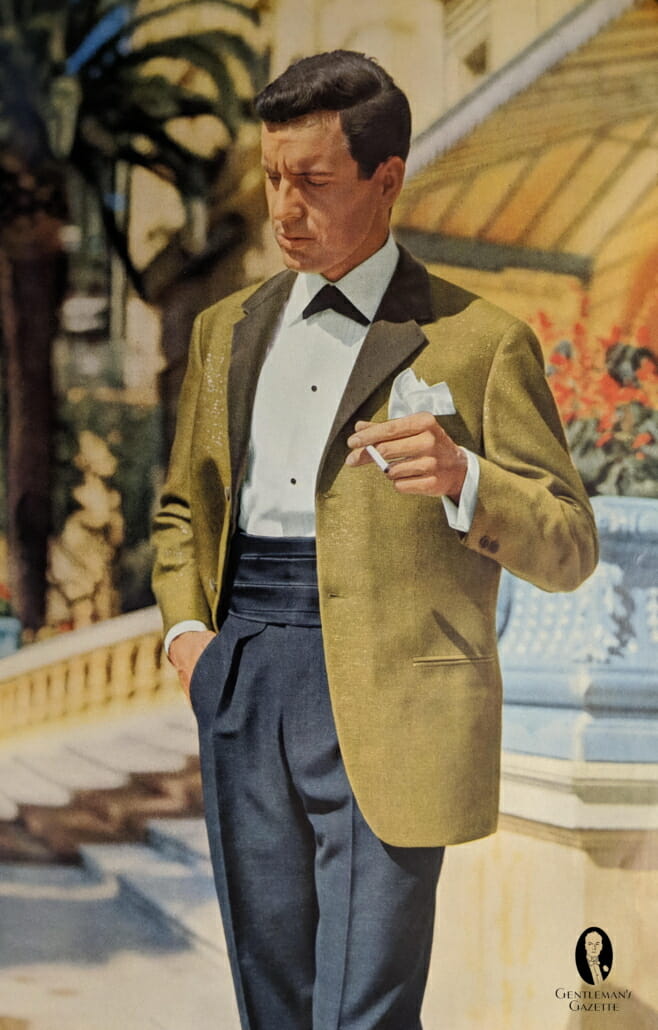
The 1963 edition of Amy Vanderbilt’s etiquette book advised that it could be worn with the ends down or tucked under the collar, adding that it was “Rather ‘Western’ looking, but attractive on some men”. A V-shaped version that attached like a ladies’ choker appeared in the mid-sixties.
The fad died off by the late sixties although these ties are still available from some western-themed and specialty retailers today.
Explore this chapter: 8 Vintage Evening Wear
- 8.1 Vintage Black Tie Etiquette & Dress Codes
- 8.2 Vintage Tailcoats & Tuxedos
- 8.3 Vintage Evening Waistcoats & Cummerbunds
- 8.4 Vintage Evening Shirts
- 8.5 Vintage Evening Neckwear
- 8.6 Vintage Evening Footwear
- 8.7 Vintage Evening Accessories
- 8.8 Vintage Evening Outerwear
- 8.9 Vintage Warm-Weather Evening Wear
- 8.10 Vintage Evening Weddings
- 8.11 Retro Evening Wear
